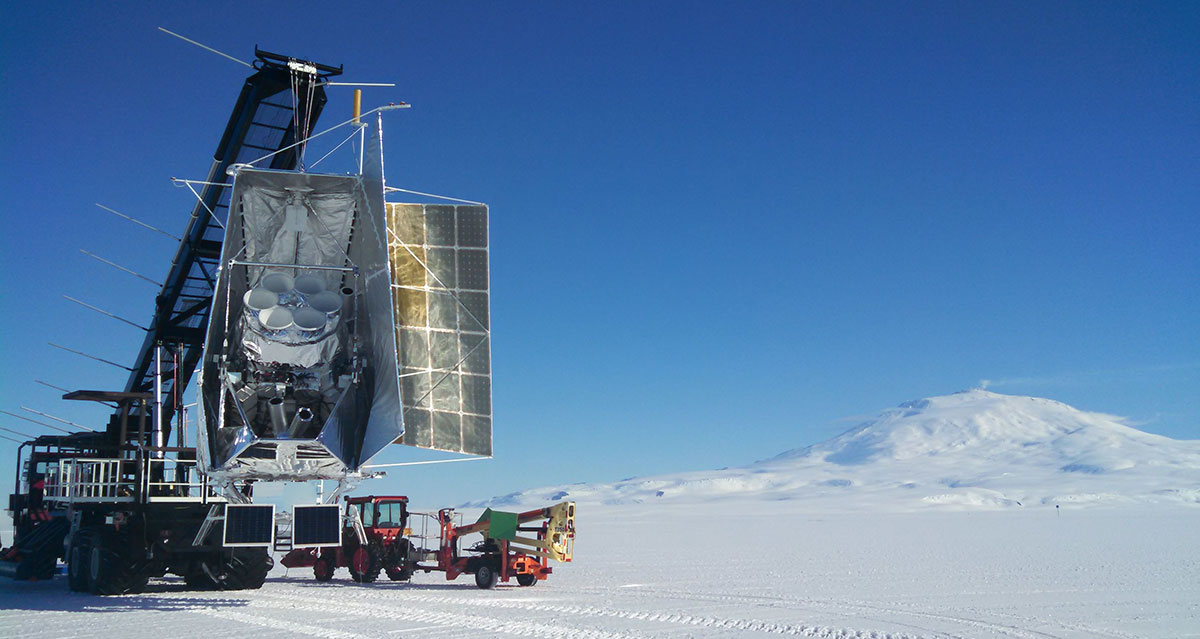

SPIDER
SPIDER is a balloon-borne CMB telescope that is searching for the B-mode linear polarization signal from cosmological gravitational waves. During its first flight in January 2015, SPIDER made maps of approximately 10% of the sky with degree-scale angular resolution in 95 and 150 GHz observing bands. The SPIDER payload features six monochromatic receivers housed in a shared cryostat. Each receiver includes a stepped half-wave plate (HWP) polarization modulator to reduce the potential impact of systematic errors due to beam asymmetries and instrument polarization. In 2017, Spider was upgraded with a suite of ~ 1500 285 GHz detectors. |


